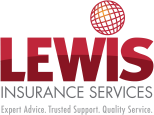There’s no escaping the fact that SMEs are doing it tough lately with a combination of losses related to the bushfires, storms and now the COVID-19 pandemic. SMEs are, quite rightly, looking very closely at their current and future finances and how they can protect their businesses from Australia’s declining economy. Clearly, reducing expenses and holding costs, whilst trying to maximise revenues is obviously one workable solution.
On the other side of the coin you have insurance providers who are in the exact same position as these SMEs. The latest APRA quarterly report in June indicated that insurance profits are declining and in consequence, premiums are increasing. So both SMEs and insurance providers are faced with the same challenges and pretty much, coming up with the same solutions. However, when you add in the fact that many insurance providers are reducing their exposure in some markets in response to these challenges, you have what many people are calling a hard market.
How does a hard market in the insurance industry affect SMEs?
The insurance industry goes through cycles called hard markets and soft markets. A soft market is characterised by lower premiums, broader coverage, relaxed underwriting, increased capacity and greater competition for your business. A hard market is the complete opposite with higher premiums, reduced capacity, narrower coverage, tighter underwriting and less competition.
The combination of natural disasters, pandemic and economic downturn have resulted in a hard market culminating in higher premiums that are likely to remain for the foreseeable future (at least until the market softens again).
How can SMEs achieve the best rates for their policies in a hard market?
Whilst the market might not currently be ideal for SMEs, your best strategy is to sit down with your insurance adviser and discuss your risks. This is because once your adviser understands all your risks and they will be able to seek out the best rates, tailored to your business. Apart from talking to your adviser, however, there are other steps SMEs can take that will also help to achieve the best rates in a hard market.
- Identify how much risk you are prepared to hold: Are you risk adverse or risk tolerant? Your answer will help you decide how much indemnity your business needs to reduce your risks to a manageable level.
- Maximise your transparency: This means that you give your adviser all the information they need to accurately assess your risks. You should already have a risk management plan that includes strategies for reducing your operational, supply chain, and health and safety risks. Just keep this up to date and share it with your adviser.
- Focus on the big picture: This means that you shouldn’t focus solely on the costs of your insurance but take into account the problems you will face if you are underinsured. Whilst costs are important, your losses will be far greater if you don’t have the right type of insurance or indemnities.
It’s good to remember that even in a hard market there are insurance providers who want to help you minimise your risks and working with an insurance adviser means they will work to achieve the best rate. To discuss your insurance policies, contact Lewis Insurance Services on 07 3217 9015 or send us an email by clicking here.
This article was published by our AFSL Licensee, Insurance Advisernet Australia P/L, www.insuranceadviser.net
Disclaimer:
This information and any accompanying material does not consider your personal circumstances as it is of a general nature only. You should not act on the information provided without first obtaining professional financial advice specific to your circumstances and considering the Product Disclosure Statement.

